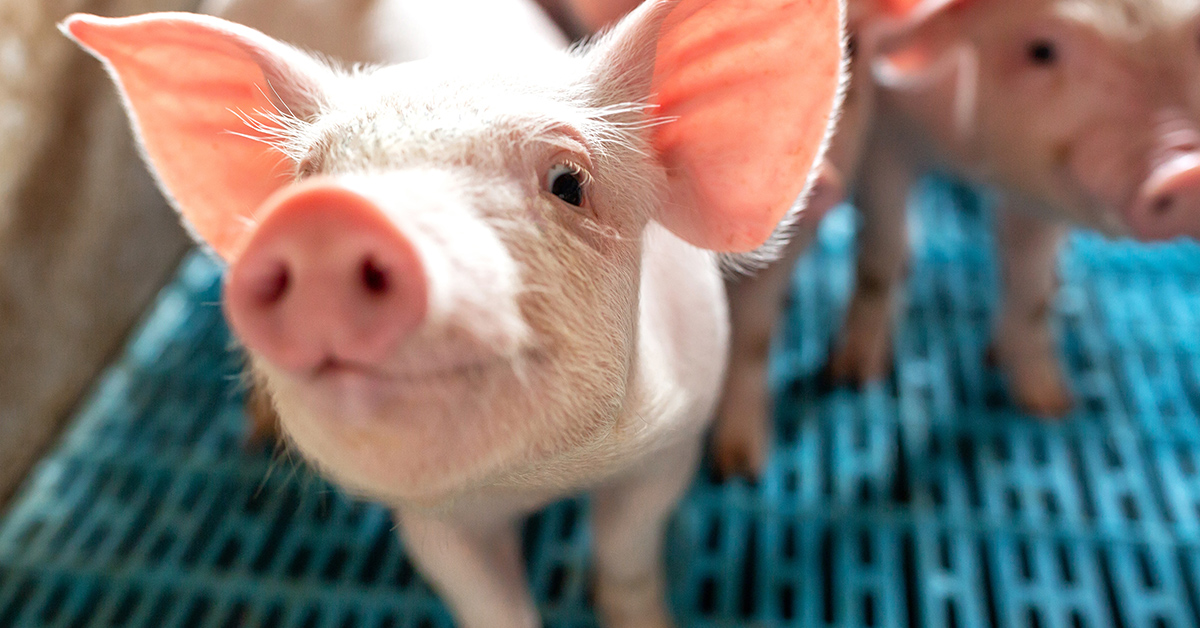
Fighting invisible invaders in feed.
There’s no escaping them. They are pervasive in almost all feed grains worldwide. And they can reduce feed intake, fertility, growth and performance in every species of livestock and poultry.
The issue? Mycotoxins.
These invisible invaders are toxic metabolites produced by fungi and molds in cereal grains, silage, forage and corn byproducts such as distillers dried grains (DDGS). Mycotoxins can form wherever molds exist—in the field, at harvest, during storage and processing, and at feed out.
Researchers have identified more than 400 different mycotoxins. Feedstuffs often contain multiple mycotoxins. Most common in feeds are aflatoxin (AFLA), deoxynivalenol (DON), fumonisin (FUMO) and zearalenone (ZEA). Unfortunately, their impact is not as simple as 1 + 1 = 2. Mycotoxins can have a cumulative effect, creating an even greater risk of performance loss if your operation’s diet contains more than one mycotoxin.
Although mycotoxins affect all species of livestock and poultry, pigs are particularly sensitive, especially to ZEA and DON. ZEA increases stillbirths and interferes with normal estrus, reducing fertility and farrowing rate. DON, also known as vomitoxin, suppresses animal immunity. A ripple effect opens the door for opportunistic diseases that hamper performance and cause higher mortality.
You may find it difficult to spot mycotoxin contamination in feed because symptoms are so wide-ranging and often seem unrelated.
Furthermore, testing for mycotoxins in feed is not always accurate. Sampling is difficult because mycotoxin levels can vary widely within individual grain and silage storage systems. Pockets containing higher moisture levels or areas with loosely packed silage can set up optimal conditions for molds to proliferate and produce mycotoxins.
The best approach is to assume mycotoxins are present in your feed and make plans to combat them.
Mitigating mycotoxin threats.
Producers may rely on binders to counteract mycotoxins. However, these solutions aren’t always effective against all types of mycotoxins, especially DON. That’s why BG-MAX™ from Arm & Hammer Animal and Food Production combines mycotoxin binders with technologies that protect the gut from damage and make animals more resilient against harmful mycotoxin effects.
BG-MAX features Refined Functional Carbohydrates™ (RFC™) technologies, which work by preventing mycotoxins from being absorbed through the gut and into the blood circulation. By combining RFCs with a specially formulated binder, BG-MAX inactivates common mycotoxins while also protecting the gut. In addition, beta 1,3/1,6 glucans and mannans present in BG-MAX can reverse immune suppression caused by mycotoxins, allowing the animal to protect itself against secondary pathogens.
In vitro tests demonstrate that BG-MAX is more effective in absorbing harmful feed compounds than activated charcoal, bentonite and another yeast-derived product. Cytotoxicity tests show that BG-MAX protects cells from cytotoxins that damage epithelial cells in the presence of leading mycotoxins, including DON, ZEA and FUMO.
Resiliency against mycotoxins.
Field research shows BG-MAX enhances sow reproductive performance in the presence of mycotoxins. In a recent commercial trial, researchers fed 303 sows a ration contaminated with ZEN and DON at levels comparable to those seen in commercial herds globally.
Treatment sows received BG-MAX in their diets, while control animals received no BG-MAX supplementation. Results (Table 1) showed sows fed BG-MAX recorded:
- Higher fertility
- Higher farrowing rate
- Lower mortality
Ultimately, the increased protection from BG-MAX helps mitigate mycotoxins in feed by building sow resiliency against their harmful effects. For more information on BG-MAX and other ARM & HAMMER™ products, visit AHfoodchain.com.
READY TO LEARN MORE?Want to learn more about what our #ScienceHearted team can do for your operation? Fill out the form below and one of our experts will be in touch shortly. |
About Dr. Sangita Jalukar |
|
Dr. Sangita Jalukar has extensive experience across the poultry production industry. She currently serves as a senior technical services manager at ARM & HAMMER™ where she is involved in the development of new products, conducting multi-species research trials and providing technical assistance to the field sales teams. Dr. Jalukar received her B.S., M.S. and Ph.D. degrees from Maharaja Sayajirao University in Baroda, India, and earned a post-doctoral fellowship from the University of Iowa. |






